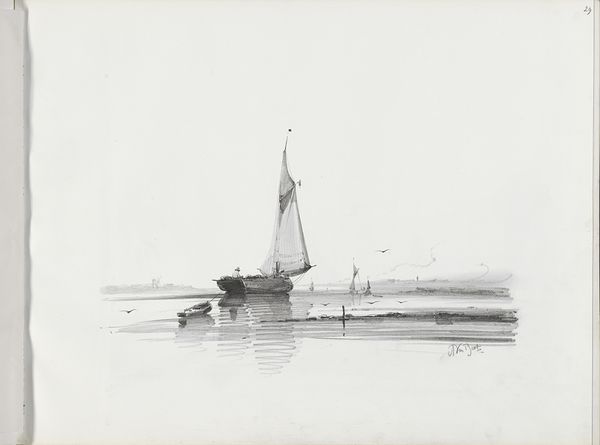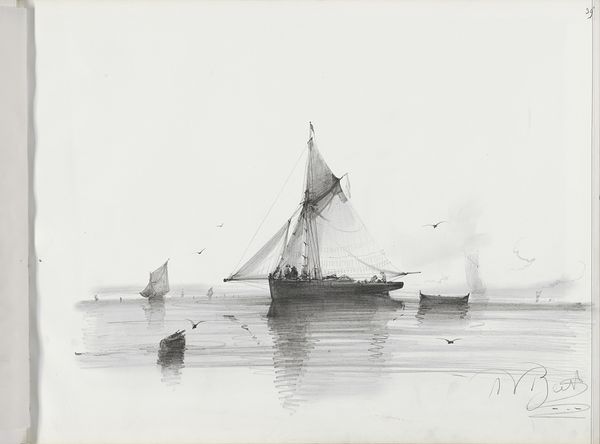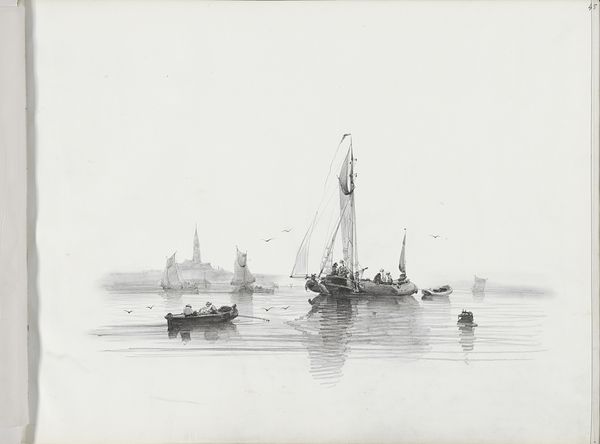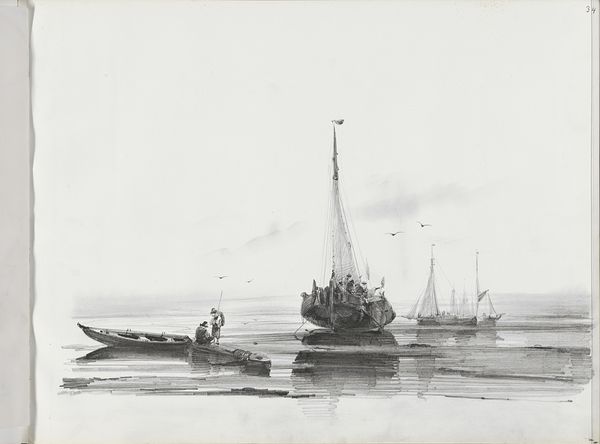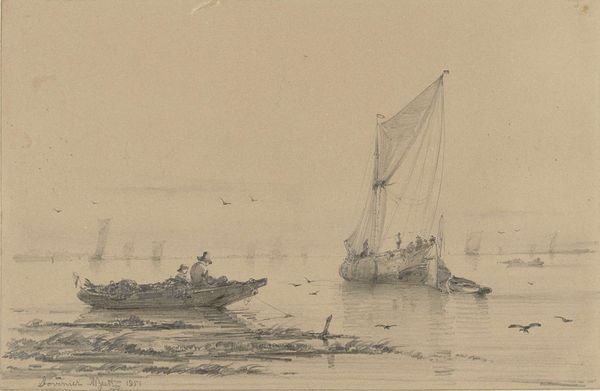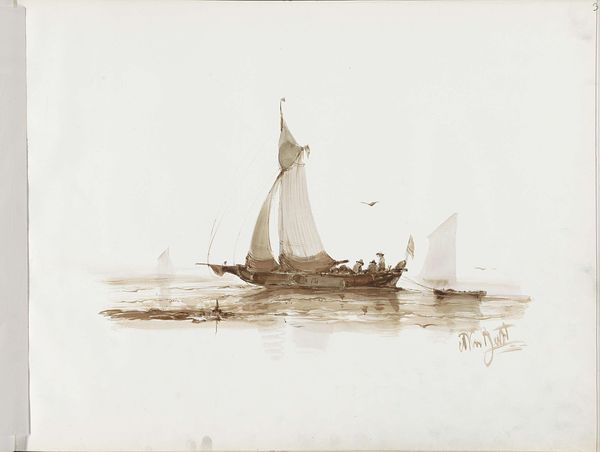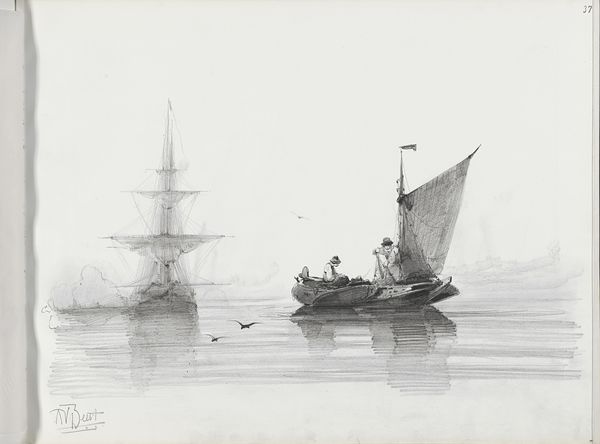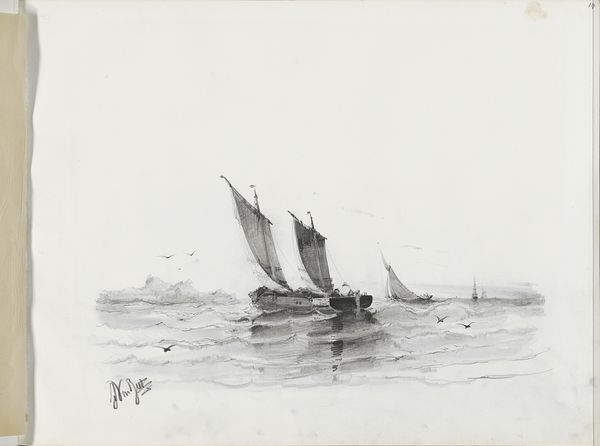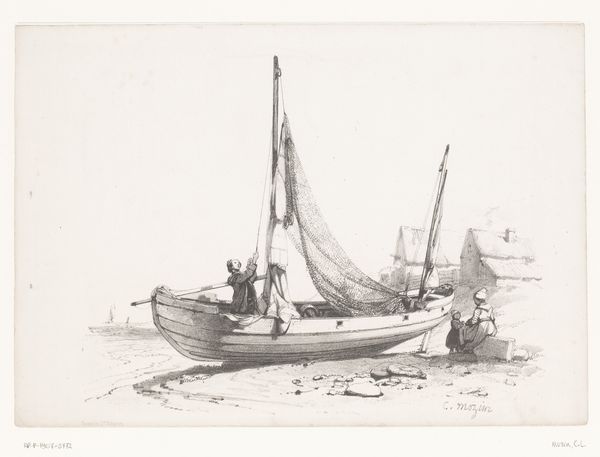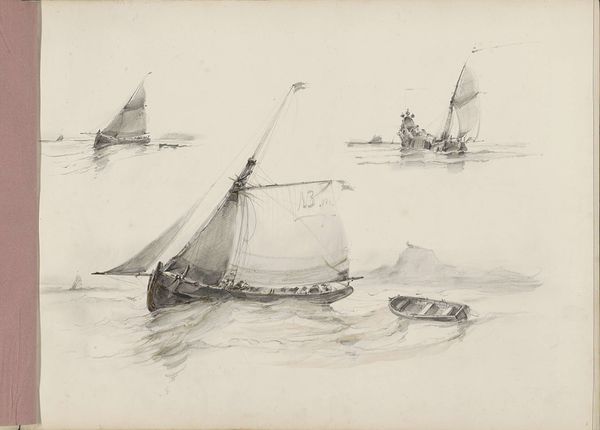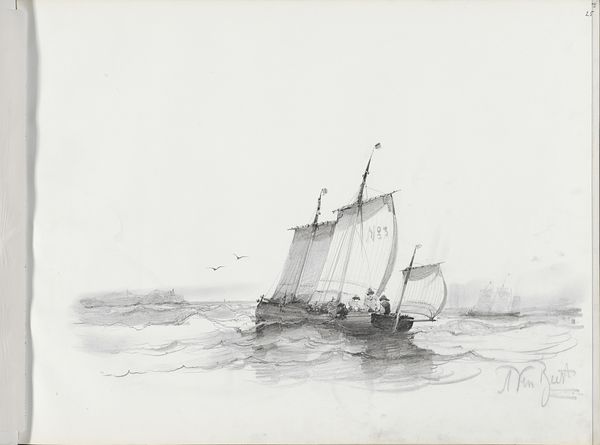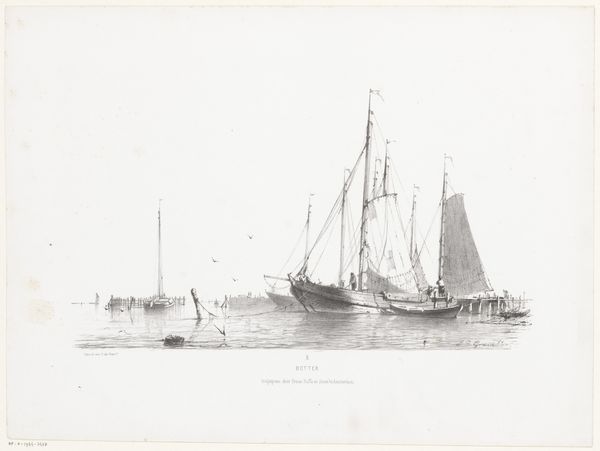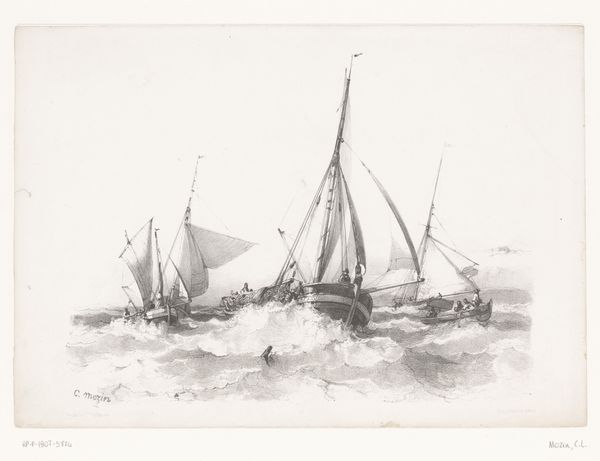
drawing, pencil
#
drawing
#
landscape
#
romanticism
#
pencil
#
realism
Copyright: Rijks Museum: Open Domain
Curator: This pencil drawing by Albertus van Beest, created sometime between 1830 and 1860, depicts a "Zeilschip voor anker voor een kust"–a sailing ship anchored off a coast. It’s part of the Rijksmuseum collection. Editor: There’s an undeniable sense of stillness, even loneliness, evoked by the almost monochromatic rendering of this anchored ship and the surrounding flat expanse. It feels very… contemplative. Curator: Absolutely. Note how Van Beest captured not only the physical reality, adhering to Realism, but also imbued it with a certain… longing that connects with Romanticism, you see how he blends observation with emotive suggestion. The ship, resting rather than voyaging, functions almost as a symbol for that yearning, wouldn't you agree? Editor: The very act of anchoring in this era held symbolic weight, a suspension between departure and arrival reflecting the societal shifts. Think about this through the lens of trade: were ships harbingers of global trade, or agents of colonial exploitation? Which perspective did Van Beest mean to emphasize, or did he see both, perhaps, suspended like the vessel? Curator: Interesting questions. The iconography of ships in Dutch art traditionally reflects national pride, exploration, and a connection to the sea. Here, the detail in the rigging suggests an interest in accurately depicting naval technology, perhaps a desire to connect with that historical narrative, that cultural identity. Editor: Yes, but by setting the ship at anchor and playing with light, Van Beest destabilizes such uncomplicated readings of empire. Are we invited to interrogate this maritime power as much as celebrate it? What I notice is the lack of direct indication regarding the ethics involved in this cultural moment. Curator: That resonates. As a work on paper, there's an immediacy here—a directness of expression. You're not contending with layers of paint or complex glazing, allowing an unvarnished engagement with both subject and technique. I'm left with a feeling of a pregnant, although still undefined moment in time. Editor: Indeed. It feels like an invitation to project our own sociohistorical context onto this relatively spare composition. It opens itself up to multiple interpretations. Curator: It's remarkable how a seemingly simple drawing can invite such layered readings of the Dutch maritime identity! Editor: A poignant reminder that art, like history, is constantly being rewritten through shifting perspectives.
Comments
No comments
Be the first to comment and join the conversation on the ultimate creative platform.
